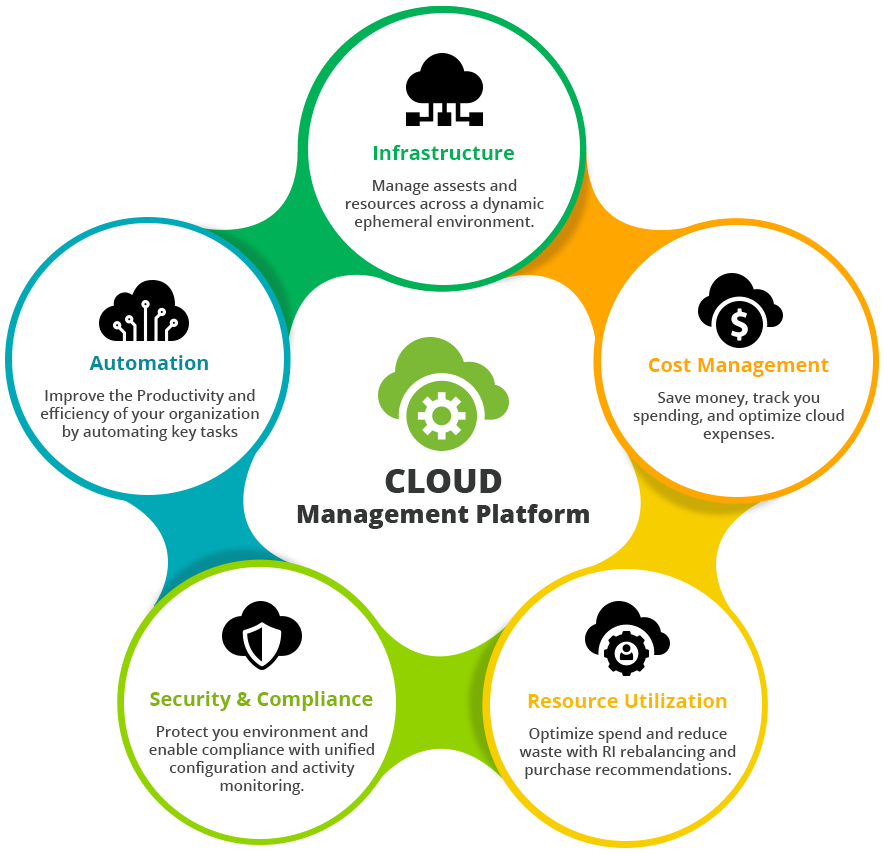Contact Us

- Introduction
- Requirements
- Benefits
The main purpose of cloud infrastructure management is to provide business scalability while consolidating IT resources and enabling a variety of users to share the same infrastructure without compromising each other’s data. In the long run, this lowers operating costs.
A cloud infrastructure management interface (CIMI) is an open standard API requirement for handling cloud infrastructure and allows users to manage it in a simplified manner with homogeneous communication between cloud ecosystems. This attains interoperable management among cloud vendors, developers, and customers.
When building out a cloud strategy, there are several in-depth steps that must be taken to ensure a robust infrastructure.
- Service and Resource Management
Service management needs to contain resource maintenance, resource guarantees, billing cycles, and measured regulations. Once deployed, management services should help create policies for data and workflows to make sure it’s fully efficient and processes are delivered to systems in the cloud - Data Center Management Tools Integration
Most data centers utilize a variety of IT tools for systems management, security, provisioning, customer care, billing, and directories, among others. And these work with cloud management services and open APIs to integrate existing operation, administration, maintenance, and provisioning (OAM&P) systems - Reporting, Visibility, Reliability, Security
Data centers need high levels of real-time reporting and visibility capabilities in cloud environments to guarantee compliance, SLAs, security, billing, and chargebacks - Interfaces for Users, Admins, and Developers
Administrator interfaces present better visibility to all resources, virtual machines, templates, service offers, and various cloud users. All of these structures are typically integrated by APIs
The adoption rate of cloud-based business infrastructures continues to increase, in-line with improvements in technology and availability of applications. There are several measurable benefits that companies can realize by migrating traditional on-premises infrastructure to a cloud-based model.
- Cost
Use of the cloud removes or greatly reduces the operating expense of a company versus setting up and managing its own data center - Agility and Flexibility
Most cloud service infrastructures are offered as self-managed, where service changes can be made within minutes. Highly elastic environments can be created to support swings and surges in compute, storage, and overall processing requirements - Availability
A typical cloud-based platform is a highly-redundant, geographically dispersed infrastructure to deliver exceptional uptime Service Level Agreements - Applications Abundance
The widespread creation, availability, and use of cloud-based applications provides unprecedented access to atomic building blocks for almost every industry, every business. Capabilities can be connected as needed - Security
Cloud infrastructure technologies and providers are always improving protection against hackers, viruses, and other data breaches with stronger firewalls, advanced encryption keys, and a hybrid approach that stores sensitive data in a private cloud and other data, even apps, in a public cloud

